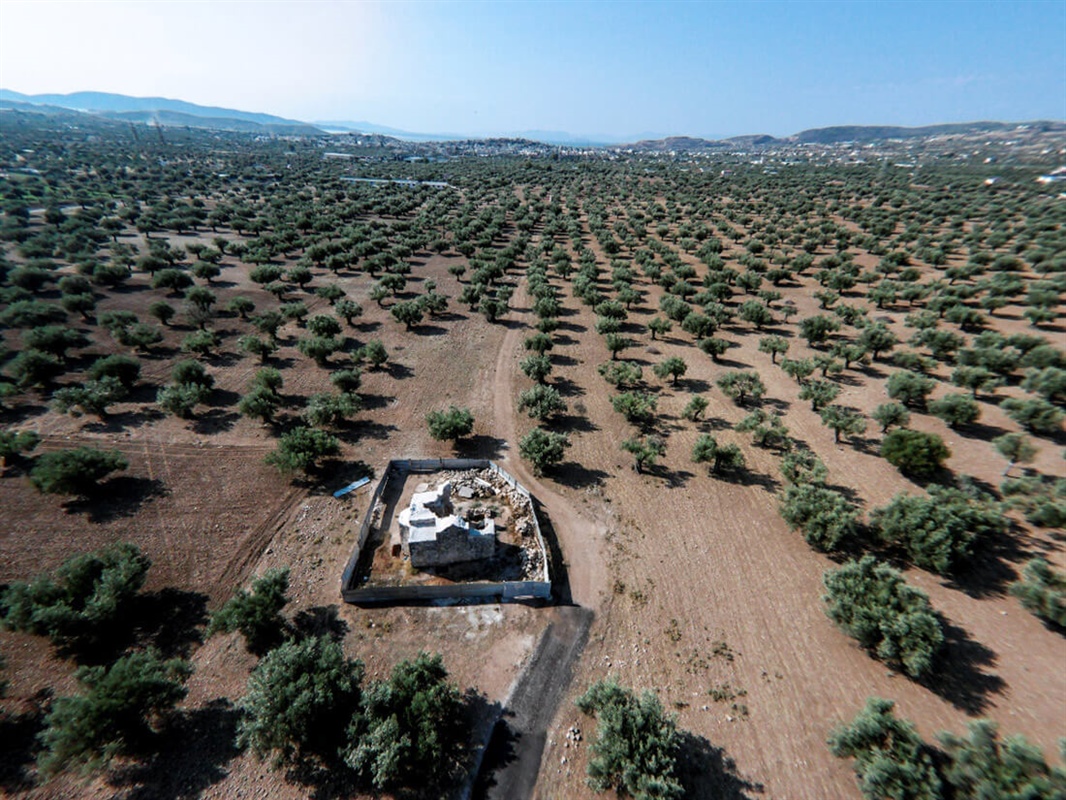Amphiareion of Oropos
Amphiareion of Oropos
A designated Landscape of Special Natural Beauty that includes a protected area of 139.81 hectares, with a total perimeter of 5 km, a maximum altitude of 122 m and a minimum of 36.0 m. It is a small valley crossed by a ravine with plane trees and a seasonal flow water. The slopes are covered by pines and bushes of the Mediterranean maquis. In ancient times, the area was surrounded by dense forests and a stream flowed permanently in the ravine. In recent years the area was degraded. It was upgraded again after the site was excavated and fenced off.
The Amphiareion of Oropos is located in a small valley in the southwest of the Skala Oropou, Mavrodilesi, which is crossed by a dry river which the ancients called Charadra. Amphiareio was the largest in ancient Greece sanctuary of the Chthonic god and hero of Argos named Amphiaraus. Throughout the period of its operation, it was the national sanctuary of Oropos, one of the oldest cities of ancient Greece. The Amphiareion was founded at the end of the 5th century, when Oropos was occupied by the Athenians. Amphiaraus belonged to the deities of the underworld. Perhaps the best period in the history of Amphiareion was the 3rd century B.C. and the first half of the 2nd century BC. (until 146 B.C.), when Oropos was a member of the Boeotian Council.
As a port of particular importance due to its communication with Euboea, Oropos was a cause of conflict between the Boeotians and the Athenians. Oropos has been inhabited since the Middle Helladic period at the location of Nea Palatia. Ceramic remains of the Middle Helladic, Mycenaean, Protogeometric, Geometric and Archaic periods come from the wider area of Oropos. Until the end of the archaic era, the city must have been under the influence, if not the occupation, of Eretria. Around 506 BC after the victorious expedition of the Athenians against the Boeotians or a little later after the Persian Wars, Oropos came under the possession of Athens. In the works of the orator Lysias it is testified that the Athenian Polystratos was commander of Oropos before 411 B.C. The city’s owners alternated for a long period, while approximately after 367/366 BC. and for several years it seems that it was autonomous.
A major event for the city was the establishment of the Amphiareion at the end of the 5th century. From the beginning of the 4th century B.C. and until 338 B.C. (battle of Chaeronea) the Amphiareion is organized and its fame spreads throughout Greece. Buildings are built on it and statues are erected. The sanctuary seems to operate on the basis of a fixed regulation. According to a list of names of winners from that time, every year the Small Amphiaria and every fifth year the Great Amphiaria were organized. The Great Amphiaria included musical, athletic and equestrian competitions in which athletes, scholars and actors from all over Greece, Italy and Asia Minor took part.
From 338 BC until the beginning of the 3rd century B.C. there is a period of various changes. Philip of Macedonia or his son Alexander cedes Oropos to the Athenians. The Athenians reorganize the festivals and games of the sanctuary, offer tributes to Amphiaraus and construct buildings. In 313 BC, Oropos is conquered by the general of Antigonus the One-Eyed, Polemaeus. In 287 B.C. Oropos becomes a member of the Common of Boeotians and there follows a flourishing of the Amphiareion that lasts until 146 B.C. Crowds of people from all parts of the Greek world, the islands and Asia Minor are now coming to his sanctuary. There are also many donations and benefits that the sanctuary receives. The ports of the state – Skala and Delphinium as they are called today – where the pilgrims of the sanctuary disembarked contributed to the increase of the revenues of Oropos. Great monarchs of the East such as Ptolemy IV Philopator materially favored the small city-state.
During the Roman Empire (from 146 B.C.) Oropos is “autonomous”. Flourishing of the sanctuary during the 1st century B.C. due to the beneficence of the Roman general Sulla. At the beginning of the 1st c. A.D. in the years of August, Oropos now definitively became the property of Athens. Votive inscriptions from the early Christian years found in Amfiarium inform us that the Athenians offered offerings to the revered god of the sanctuary. The cult of Amphiaraus died out with the rise of Christianity.
Younger travelers showed great interest in the sanctuary. Leake, a connoisseur of the ancient world, gave correct information about the Amphitheater Sanctuary. During the 19th century and other travelers were interested in the discovery and study of the sanctuary. In 1884, the systematic excavation of the sanctuary began by the Archaeological Society with Vasilios Leonardos. The excavation lasted intermittently until 1929 and revealed the remains of monuments at Mavrodilesi and many inscriptions which are valuable for the information they contain.









